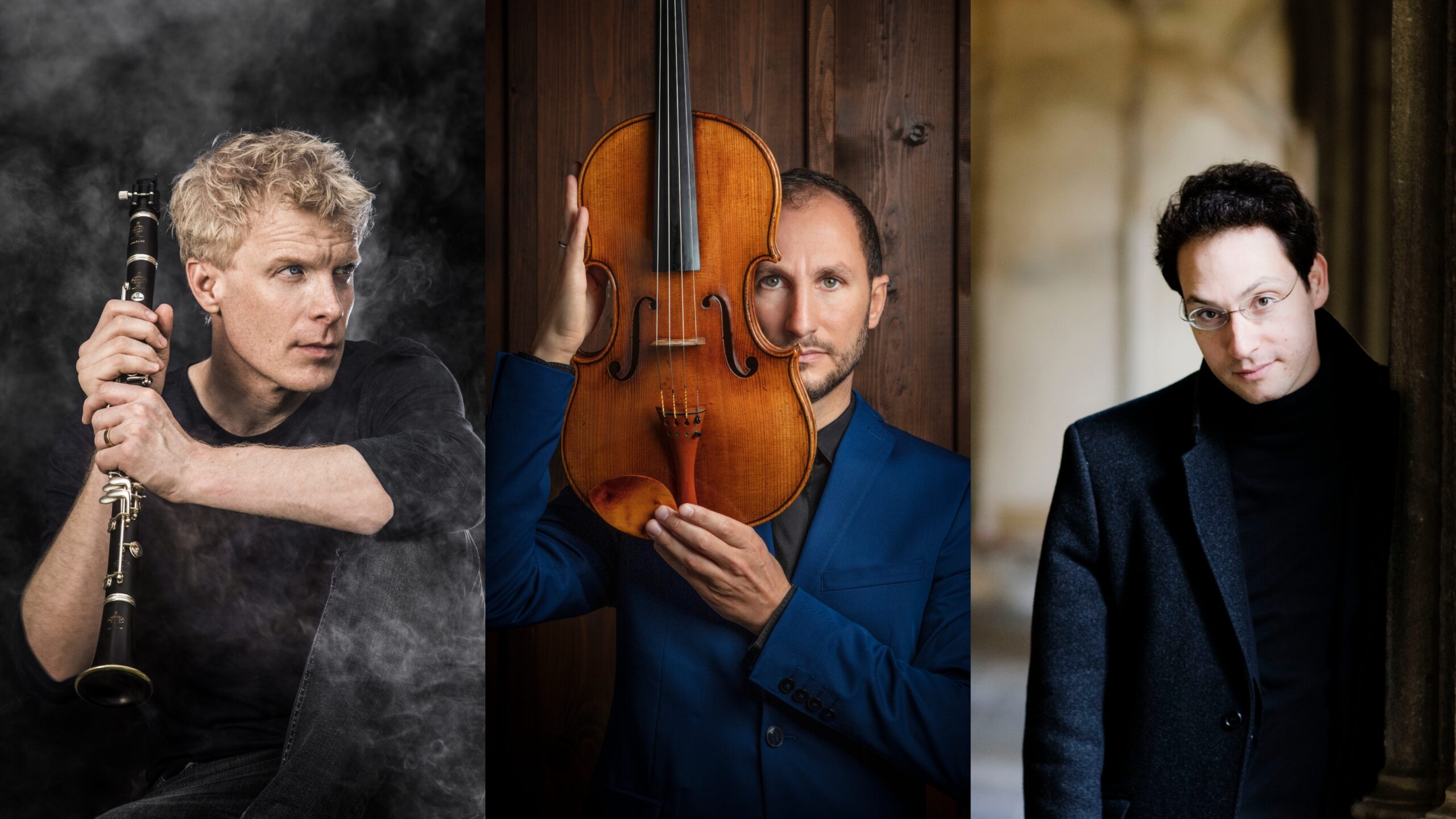By Lucy Caplan
Lucy Caplan is Assistant Professor of Music at Worcester Polytechnic Institute. She is the author of Dreaming in Ensemble: How Black Artists Transformed American Opera, published by Harvard University Press.
“What the work depicts, no-one can probably say for certain.” So wrote the Viennese critic Eduard Hanslick, to whom Dvořák dedicated his cycle Legends. To Hanslick, the uncertainty of Legends was a source of creative strength: despite the lack of a clear programmatic narrative, he continued, “we sense that the main role is given over to something miraculous, enchanting.” Here was music that gestured toward something beyond itself, even if the specific nature of that something remained opaque. This was a powerful quality: it captivated the listener’s attention through its sense of purpose yet retained enough abstraction to allow for a multitude of interpretive perspectives.
A similar combination of allusiveness and ambiguity characterizes much of this evening’s program. Johannes Brahms’s Op. 91 songs are typically performed by a contralto alongside a violist and pianist. Shai Wosner’s arrangement, for instrumentalists only, reconceives of these pieces as songs without words, necessarily giving them a measure of distance from their original context. The concluding “dance mosaic” offers a range of dance pieces loosely inspired by national and folk traditions. Generally speaking, these works do not quote directly from existing dances, nor do they accompany a particular dance or dancer. Rather, they evoke the spirit of a time, place, or people—less a quotation than a sensibility. And across these contexts, less is more: the intentional imprecision of each work’s relationship to an extramusical source—whether it be myth, poetry, or dance—is what allows for the composer’s and listener’s imaginations to take flight.
Antonín Dvořák, Legends, Op. 59, Nos. 1–3 (1881) (arr. Wosner)
Sources differ as to the specific inspiration for Dvořák’s evocatively named Legends: some posit that he was inspired by the Czech poet and folksong collector Karel Erben, while others wonder if the spark was Franz Liszt’s piece of the same name, a meditation on the life of St. Francis. Either way, the music that Dvořák created is singularly compelling. The set comprises 10 short pieces, written initially for piano four-hands and later orchestrated by the composer for a smallish ensemble. Although each piece is modest in size, they are emotionally capacious in a way that befits their rather grand title: each one moves dramatically between brightness and gloom, using sudden contrast to maximum effect.
The first of the set begins with a rather severe melodic motif, which is interspersed with gentler, smoother passages. It concludes sweetly and peacefully, with a hushed set of repeated D-major chords. The serene mood flows seamlessly into the second piece, which begins with a charming, rustic melody. But the next, contrasting theme is faster and more agitated, and as the piece progresses, its tempo continues to change on a dime, creating an undercurrent of pervasive instability. The third is a folksy dance, full of spinning momentum; it eventually relaxes into a trio-like Andante, followed by the dance’s return.
Johannes Brahms, Clarinet Trio, Op. 114 (1891) (arr. Wosner)
Gestillte Sehnsucht & Geistliches Wiegenlied, Op. 91 (1884) (arr. Wosner)
Friendship was central to Brahms’s sense of self, both as a composer and as a human being. He enjoyed close relationships with a broad range of instrumentalists and fellow composers, and he embraced the private, domestic forms of music-making that were so central to nineteenth-century musical culture. As the musicologist Paul Berry and others have documented, these friendships can be heard in Brahms’s music: he sometimes borrowed generously from others’ compositions, in addition to writing with specific performers in mind. The Clarinet Trio was one of several pieces inspired by Brahms’s late-in-life friendship with the esteemed clarinetist Richard Mühlfeld. Written in 1891—shortly after Brahms had proclaimed his intention to cease composing, then reversed his decision—it is a deeply intimate work. The three instrumentalists (in the original version, a clarinetist, cellist, and pianist) seem to converse with the ease of longtime confidants. The first movement begins with a vulnerable, unaccompanied melody; the clarinet and piano answer with comforting reassurance. A golden warmth suffuses the second movement, while the third offers a lilting andantino in triple meter. In the final movement, Brahms returns to one of his favorite rhythmic tricks, dividing beats simultaneously into both two and three. After so much introspection, the piece comes to a surprisingly outspoken close.
Brahms’s friendships are also embedded in the two Op. 91 songs. Written originally for voice, viola, and piano, they were composed for the violinist Joseph Joachim and his wife, Amalie Schneeweiss. The story of “Geistliches Wiegenlind” (which was composed first but is performed second in the set) is a happy one: it was intended as a lullaby for the couple’s son, who was named Johannes in Brahms’s honor. Beginning with a tune borrowed from a medieval Christmas carol, it is gentle and sweet, notwithstanding a mid-song foray into a more agitated mood. “Gestillte Sehnsucht” has a stormier genesis: Brahms wrote it when the couple had reached a point of tension in their marriage, hoping to urge them toward reconciliation. (It didn’t work; they divorced anyway.) A setting of a bucolic poem by Friedrich Rückert, it features languorous melodic lines in each of the two instrumental voices, with the piano providing a smoothly rippling foundation.
J.S. Bach/Charles Gounod, Ave Maria (1853) (arr. Fröst)
Bach’s preludes and fugues from the Well-Tempered Clavier are beloved for good reason. Inventive, intelligent, and accessible to piano students of various levels, they offer an ideal entry point into his musical mind. Unsurprisingly, they have also proved inspirational to generations of composers, from Chopin to Shostakovich. The French Romantic composer Charles Gounod is another example: his Ave Maria, published in 1853, sets an original melody over a barely altered version of Bach’s C major prelude. Performed often by singers and instrumentalists alike, it embraces the harmonic richness of Bach’s music through the addition of a soaring, passionate melody.
“Dance Mosaic”
Johannes Brahms, Hungarian Dances WoO 1, Nos. 1, 14, 21 (1869–1880)
Witold Lutosławski, Dance Preludes Nos. 1 & 5 (1954)
Béla Bartók, Romanian Folk Dances (1915) (arr. Göran Fröst)
Shai Wosner, Bulgarian Gigue (after J.S. Bach) (2024)
This colorful set of dances evokes the social and musical worlds of central and eastern Europe, arranging snippets of various traditions into a vibrant whole. Brahms wrote his Hungarian Dances after a stint accompanying the Hungarian violinist Ede Reményi on a recital tour. Numbering 21 in total, the dances were published in two groups: one set in 1869 and another in 1880. Among his best-known compositions today, they are compact, richly melodic, and full of memorable rhythmic patterns. Lutosławski’s Dance Preludes emerged from a very different context: they were written during a period when Poland’s Communist regime encouraged the composition of folklore-inspired music intended to instill national pride. The Prelude No. 1 is angular and energetic, with a sharply arpeggiated melodic line and a persistently staccato articulation. The Prelude No. 5 revels in metric irregularity, moving among a range of time signatures; the solo clarinet’s line often departs from the rhythmic patterns of the ensemble. By contrast, Bartók’s Romanian Folk Dances sound almost sedate. Each of the six short dances in the set is based on a folk tune that the composer heard during his extensive travels in and around his homeland, and especially his time spent in Transylvania listening to fiddle and fife players. They range widely in mood, from the stern confidence of the opening “Stick Dance” to the elegance of the “Dance from Buscum” (No. 4) and the rollicking energy of the final “Fast Dance.” In closing, Shai Wosner’s newly composed Bulgarian Gigue takes inspiration from Bach’s French Suite No. 5, which creatively merges dance rhythms with fugal counterpoint.





